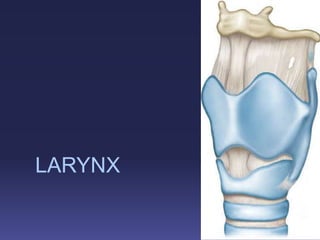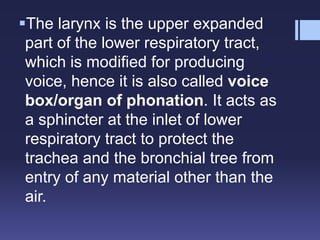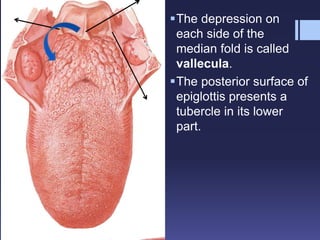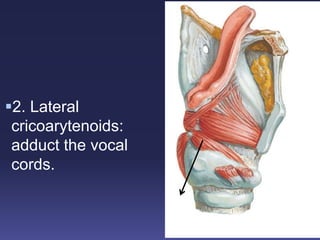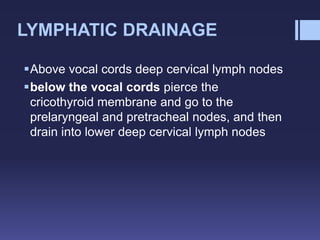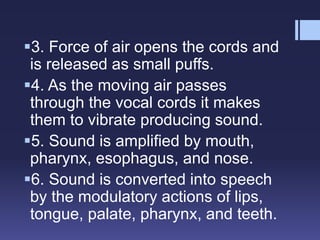The larynx, or voice box, is located in the neck and contains vocal cords that produce sound. It has three main functions: phonation, respiration, and protection of the lower respiratory tract. The larynx is composed of cartilage, including the thyroid, cricoid, and arytenoid cartilages which connect through joints allowing movements like abduction and adduction of the vocal cords. Intrinsic muscles like the posterior cricoarytenoids abduct the vocal cords while muscles like the thyroarytenoid laterally adduct the vocal cords to modulate vocal pitch and volume. The larynx plays a crucial role in both voice production and airway protection.
